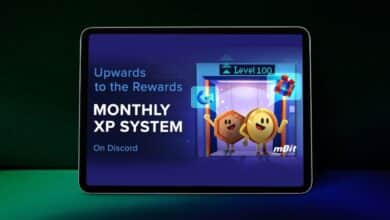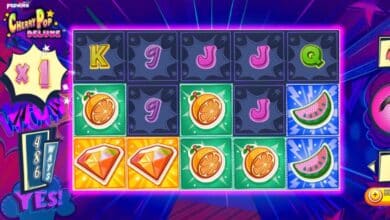Basic Terms That You Should Know When Dealing with Bitcoins

This content has been archived. It may no longer be relevant
Bitcoin is a new kind of money, in the form of computer software stored in a digital wallet app on your smartphone or computer. Bitcoin is often referred to as a ‘digital currency’ that has begun entering the traditional money market. If you are a regular crypto user or thinking of investing in cryptocurrencies, you have probably come across the following terms.
- Address
Indicates the source and destination of a Bitcoin payment; it consists of a string of random numbers and letters, both upper and lower cases, and are generally 34 characters. However, to prevent visual ambiguity, the uppercase letters “O” and “I” and lowercase letters “l” and the number “0” are never used. A Bitcoin address is very similar to an email address used to send or receive messages; it can also be shared publicly whenever a user needs to receive Bitcoins from other users.
- Bitcoin
The first decentralized cryptocurrency that works on a peer-to-peer network without the need of any financial intermediaries. Bitcoins can be exchanged for other currencies, products, and services.
- Block
A collection of the most recent Bitcoin transactions during a particular period, say around 10 minutes. A block is like a link in a chain that processes a part of the entire Bitcoin transaction that preceded it. All the Bitcoin network data are permanently stored in a block, which, once written, cannot be removed or altered.
- Blockchain
The record-keeping technology is in the form of a database and keeps the authoritative record of every Bitcoin transaction that occurs. It is a distributed ledger where all the Bitcoin transactions are recorded.
- BTC
An abbreviation of the Bitcoin currency used worldwide!
- Centralized
Under the control of a central authority where one or more parties are in control of the service.
- Cold Storage
Cold storage is the offline wallet for storing Bitcoins. Cold storage is often considered the safest mode for holding Bitcoins as these wallets cannot be accessed via the internet. Cold storage includes USB drives, offline computers, or paper wallets.
- Decentralized
Not under the control of any central authority or any controlling party. Bitcoin is a decentralized network as no central authority or government controls it.
- Wallet
A typical software program for storing Bitcoins, even though technically speaking, Bitcoins are not stored anywhere like physical money is just a representation of digital coins’ physical storage. It is a collection of Bitcoin private keys corresponding to the address of that wallet that facilitates the sending and receiving of Bitcoins. The four main types of Bitcoin wallets are mobile, web desktop, and hardware.
- Transaction Fee
Also referred to as the miner’s fees, transaction fees are small amounts of Bitcoins given to incentivize the Bitcoin miners to validate the Bitcoin transactions before adding them to a block. A typical Bitcoin transaction fee amounts to 0.0001 BTC.
- Satoshi Nakamoto
Namely, a group of pseudonymous persons developed Bitcoin, created the white paper, and deployed Bitcoin’s original reference implementation.
- Satoshi
Named after the founder or founder of Bitcoin, Satoshi Nakamoto, Satoshi is the smallest unit of a Bitcoin, equivalent to 100 millionth of a Bitcoin. Bitcoins are split into smaller Satoshi units to facilitate easy transactions.
- QR Code
A static version of QR codes representing Bitcoin private and public keys can be easily scanned by digital cameras or smartphones. Bitcoin QR codes are permanent, and once created, they cannot be tracked or edited.
- Public Key
A large string of letters and numbers is derived from a private key and allows Bitcoins to be locked and received. It can be shared publicly and allows users to receive funds.
- Protocol
Standardized rules dictate how participants on the Bitcoin network should communicate with one another. Each node on the Bitcoin network follows the protocol as to how to connect to other nodes, thereby briefly explaining how many Bitcoins can exist on the network at a particular point in time.
- Proof of Work
A cryptographic zero-knowledge proof that makes the Bitcoin network robust by mining or recording transactions. The system requires a non-insignificant but feasible amount of computation to deter malicious uses of computing power. Bitcoin uses the ‘Hashcash’ proof of work system to generate new blocks.
- Private Key
The large and random number works like a password to determine the ownership of Bitcoins. Crypto wallets generate private keys to allow users to spend Bitcoins from the wallet associated with that specific Bitcoin address.
- Peer to Peer
A distributed application architecture that partitions workloads between peers can directly communicate with each other without any centralized server acting as a link between them.
- Miner
Group of computers digitally adding Bitcoin transaction records to the blockchain network. Miners add new transactions to blocks and also verify blocks created by other miners in exchange for transaction fees, also known as “miner’s fees” that are offered to incentivize miners for their services.
- Ledger
It is an electronic form of a database containing a list of transactions and financial balances. The Bitcoin blockchain is the first decentralized and distributed public ledger controlled by a central authority but is dispersed across multiple computers located worldwide and can be run by anyone having an Internet connection.
Wrap Up
As cryptocurrencies are entering into the traditional finance market, there are some new words that every user should be well-versed with. Enrich your vocabulary with these new words that you will often come across while dealing with Bitcoins and other digital assets. Also, there needs to be proper research and analysis on BTC price prediction before getting into it.





